Will Island’s Ecological Solutions Survive Economic Opening?
by Bill Weinberg, Earth Island Journal
Bicycle-taxi driver Yeral García has a keen sense of the events on the world historical stage that led to him pedaling me around Old Havana.
“In 1991, the Soviet Union collapsed, and Russia cut back subsidized oil to Cuba,” he told me while deftly maneuvering through the traffic. “The country was paralyzed. Those were terrible years. But the government began importing bicycles.”
Indicating the pedal-cab he was assiduously working as he spoke, he added, “That’s where this came from.”
But these taxis, while plentiful on the streets of Havana, are lone survivors of that era. Although universally called bici-taxis, they are actually tricycles—retrofitted work-trikes initially imported from China to carry loads around the city during that interval of crisis and scarcity referred to officially as Cuba’s “Special Period.”
As García relates it, the conversion of the industrial trikes into bici-taxis began spontaneously—in “clandestine” workshops, although they were eventually licensed and regulated by the government. The sturdy frame and base are from the original Chinese import; the seats and awning were added by citizen improvisers.
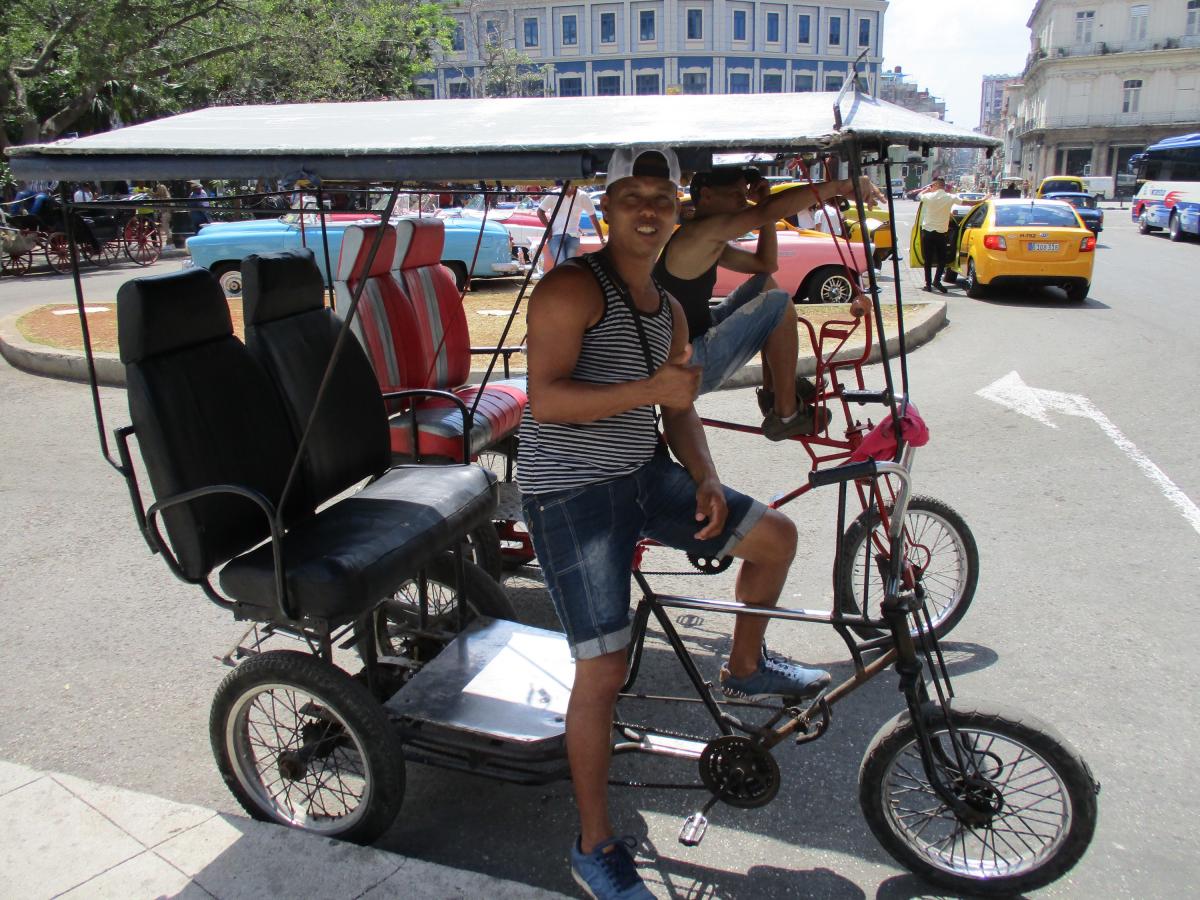
This is my second time in Havana, and the contrast with my first is impressive. Then, it was 1993—the very worst year of the Special Period. I had been invited to attend a conference on urban bicycle transportation, showcasing the Cuban government’s efforts to adapt to harsh circumstances with an ecological alternative. Then, bicycles were nearly ubiquitous on Havana’s streets, with cars few and far between. Gas stations were closed, the infrequent public buses dangerously overcrowded, the storefronts mostly shuttered.
And in the quieter city, gardens sprung up on the unused patches of land, corn stalks growing and sometimes even goats grazing between apartment blocs. In rural agriculture, there was an official push for organic methods, in the absence of petrochemical fertilizers.
The agony of the Special Period was deepened by US policy. With Cuba already hit hard by the Soviet implosion, Washington severely tightened the embargo that had been in place since 1962. The 1992 Torricelli Act and 1996 Helms-Burton Act imposed sanctions even on foreign countries and non-US companies trading with Cuba. The policy continued in defiance of multiple UN General Assembly resolutions condemning it.
The Special Period largely came to an end—although with no official announcement—when Hugo Chávez came to power in Venezuela in 1999, and began providing subsidized oil. President Obama restored diplomatic ties with Cuba in 2015, anticipating an end to the embargo—although it will take Congressional action to overturn it. The Cuban government is wooing foreign investment as never before.
With Cuba now opening up to the world economy, will the ecological alternatives adopted during the crisis survive? That’s what I was back in the island nation to get a sense of.
The most obvious change is the Havana traffic—there is much more of it and it is much more diverse. And it doesn’t speak well for the survival of alternatives. Except for the bici-taxis, the bicycles are almost entirely gone. The old 1950s Detroit model cars, kept roadworthy through years of embargo by endless improvisation, mostly have shiny new paint jobs—but still no catalytic converters for pollution control, except some with new motors imported from Europe over the past decade. The public buses now run regularly and are not as dangerously overcrowded, although many still belch black smoke. And big double-decker tourist buses—all brand new—idle in front of hotels bustling with foreign visitors.
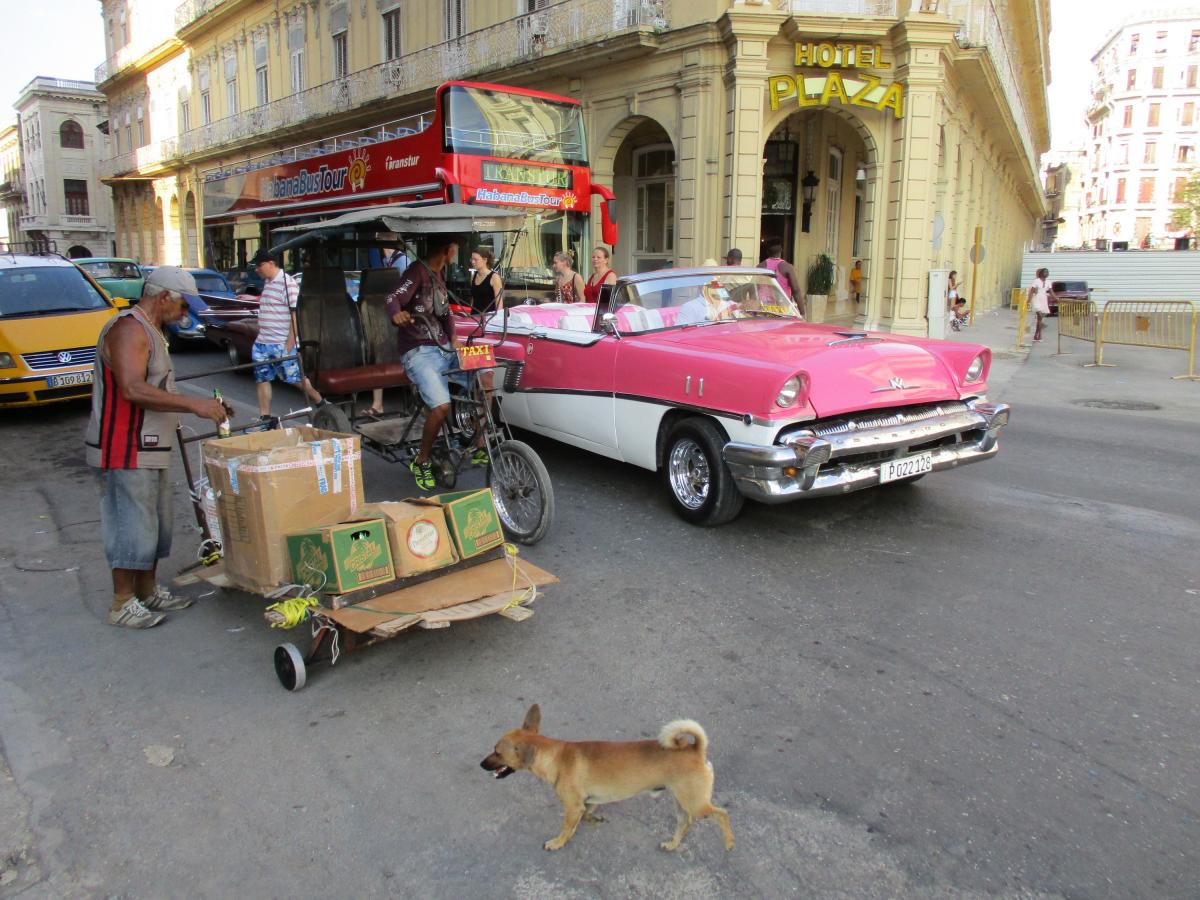
Yeral García told me he worked as a longshoreman on the Havana docks before becoming a bici-taxista a few years ago—which he views as an improvement. He must pay the equivalent of $10 a month for his license to the National Office of Tax Administration, ONAT, as well as $3 a day to rent the trike from its owner. Still, he makes $15 a day as a bici-taxista, compared with $150 a month he made as a longshoreman
“It’s hard work, but it pays well,” he said. “Not to get rich, but to survive. Not to live, but to survive.” He is 34 and anticipates six years more as a bici-taxista. “It costs a lot of physical wear,” he said. García has a young daughter to support, and his own father died of pneumonia during the Special Period.
Most of his fares come from tourists, and García does see his tough vocation as a sign of progress in Cuba—linked to the increasing economic openness since Raúl Castro took over executive powers from his brother Fidel in 2006 (formally assuming the presidency two years later).
“Ten years ago, life was more difficult,” García told me. “Raúl thinks more openly than Fidel. Fidel had more of a military mentality. Raúl is following China, with more openings to tourism and economic opportunity.”
But what has been the cost for the ecological model that Cuba’s leaders touted during the Special Period? The prognosis, I found, was mixed…
The Velorution Betrayed

At the bicycle transportation conference I attended in 1993, the banner over the stage read “LA BICICLETA LLEGÓ PARA QUEDARSE”—The Bicycle Has Come to Stay. One of the organizers was Gina Rey, then director of the Group for the Integral Development of the Capital, an advisory think-tank to Havana’s government. Interviewing her after the conference, I’d asked if she was really confident the bicycle would survive the eventual end of the crisis. She’d answered frankly: “The threat exists that when we overcome this difficult stage, there will be a move back to automobiles. It depends on what we can do to develop social awareness of the advantages of the bicycle apart from the economic situation.”
I caught up with Gina Rey again exactly 24 years later, on my trip of April 2017. An urban planning specialist who has served as an advisor in Yemen and Angola as well as Havana, she is currently a professor at the University of San Gerónimo, in the Cuban capital’s historic district.
Looking back at the changes over the intervening years, she admitted: “In Havana, nearly 1 million bicycles came to circulate, and today it can’t be more than 100,000.” She cited “lack of road safety and the disappearance of exclusive bicycle lanes. Priority for the autobus and motorized transportation predominates in the city’s circulation.”
And the bici-taxis, surviving remnant of the bicycle’s austere Havana heyday, are coming under heavier regulation. Under a new rule issued by Havana provincial authorities, bici-taxistas can be fined if they venture out of the municipality they are registered in. Since all metropolitan Havana is a single province, and each district its own municipality, this will certainly cut back on fares.
It also points to larger issues for the city’s equitable development. Something akin to gentrification can already be seen in much of Old Havana, the colonial-era historic district on the harbor-front and a UNESCO World Heritage Site. Here, the tourist economy booms, the main drag of Calle Obispo now a pedestrian mall lined with trendy shops, restaurants, bars and galleries. It is all in a partnership with the state, but much foreign capital is involved—mostly European and Canadian.
The Manzana de Gómez, a century-old building on the western border of Old Havana, is a telling symbol of the changing economy. It was built as a commercial center for the island’s elite during the sugar boom, then confiscated and mostly turned into school classrooms after the Revolution, before being abandoned and left to decay in the Special Period. It has just been transformed into Cuba’s first luxury mall, with Bulgari watches and fancy French fragrances on display. Ironically, it opened with investment from the business arm of the Cuban military, that institution most associated with the Revolution.
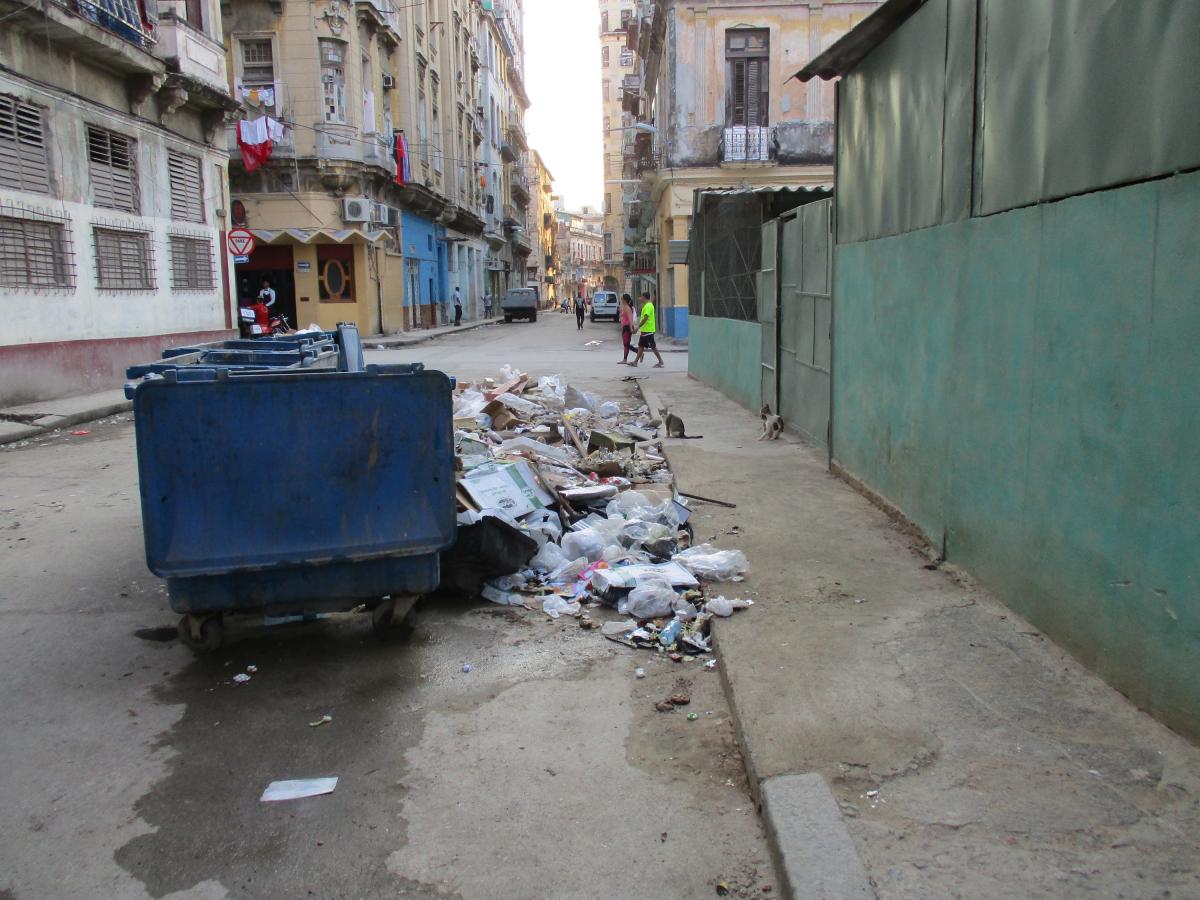
The new mall overlooks Central Park, a tree-lined square where the bici-taxistas congregate to pick up fares from the nearby high-end hotels and museums. But this actually lies just within Central Havana, a separate municipality. The difference is dramatic. Walk but two blocks beyond Central Park and the quasi-gentrification abruptly ends.
The working-class barrios of Central Havana look much as I remembered them a generation ago. Residents still live in what would be considered slum conditions in the United States—deteriorating buildings, small and overcrowded apartments with no hot water, the occasional vacant lot filled with rubble and garbage.
However, there is a very critical difference from the ravaged neighborhoods of US cities: nobody pays any rent. Nearly all residents are the owners of their dwellings, pursuant to the expropriation of the old landlords’ properties in the early years of the Revolution. There appears to be no risk of displacement—for now.
Can early harbingers of displacement be seen?
Under Raúl’s reforms, municipal taxes have been imposed on apartments, and a very modest—really still semi-official—real estate market has emerged. Apartments can now be sold, although citizens are limited to a single property (plus a vacation home, under a recent change). The ban on foreigners owning property is still officially in place, although a 1995 reform made an exception for the tourist sector. And with growing numbers of vacationers seeking Havana getaways, the phenomenon of prestanombres—name-loaners—is emerging.
This kind of subterfuge has long made restrictions on land sales to foreigners in Mexico a farce, and an incipient economy of this kind can be seen in Havana. On the website Revolico.com, privately maintained from abroad by a group of young Cubans and Spaniards, Havana apartments are openly offered “for sale.” Other such sites are following this model.
Access to the Internet is also a clear geographic and class divider. The government is now undertaking its first steps toward home ‘net access—in Old Havana, where many of those who enjoy it are foreign investors in tourism enterprises. In the rest of the city, residents must use outdoor wifi spots, at a price prohibitive for many.
So Havana has regressed to automobile-dependency even as the beginnings of a new class stratification can be seen.
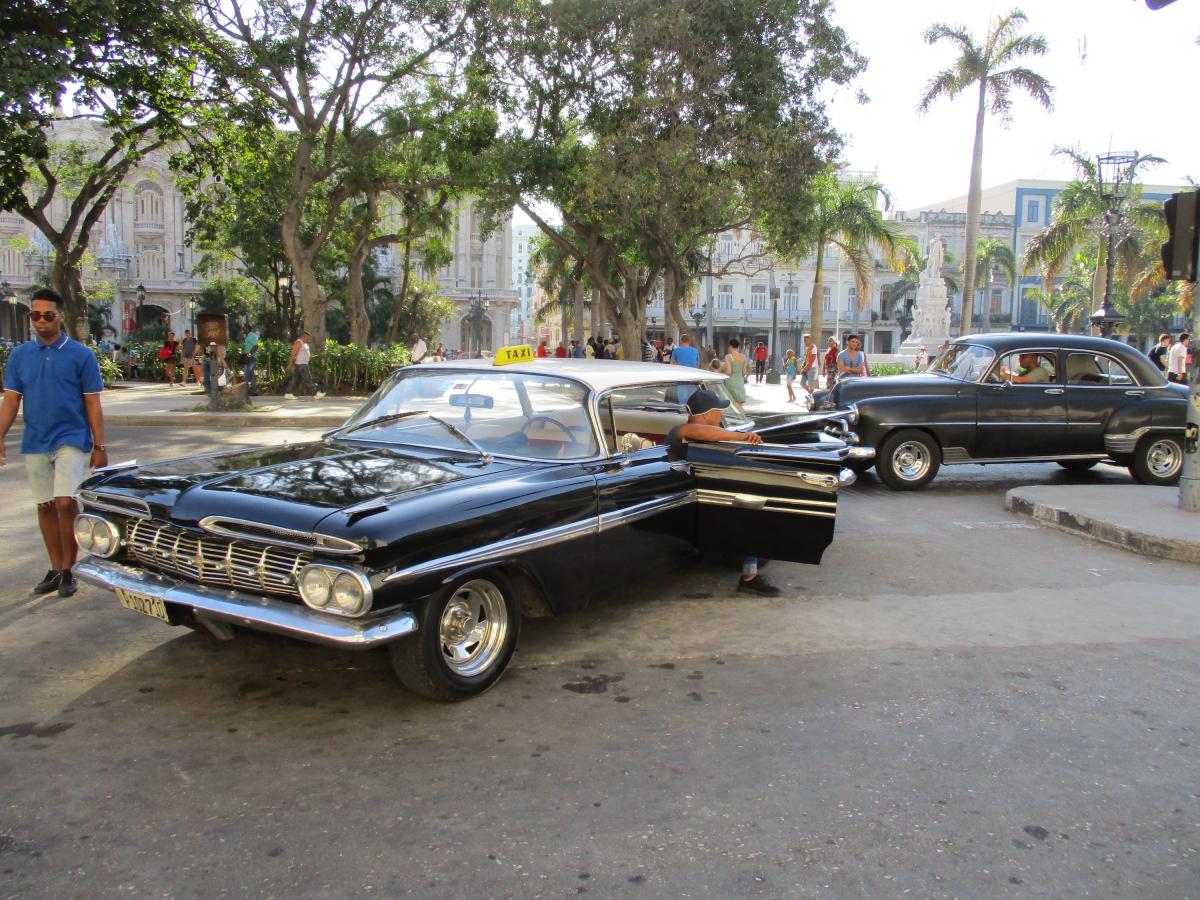
At the 1993 conference, foreign attendees cracked that we were witnessing the “Velorution in the Revolution.” This was a reference to the neologism coined by bicycle advocates for the consciousness shift leading to their mass acceptance, and to Régis Debray’s classic 1967 book on Cuba’s challenge to Latin America’s traditional left, Revolution in the Revolution? But from the perspective of 2017, it seemed more like “The Velorution Betrayed.”
Yet, other signs are more hopeful. One difference in Central Havana today is the presence every few blocks of fruit and vegetable stands, often set up on trike-mounted carts. The buhoneros—street hawkers—sell bananas, pineapples, peppers, cabbage, carrots, onions, garlic. It is all grown on the island—much of it within Havana—and most is presumably organic.
Urban Agriculture Survives —and Thrives
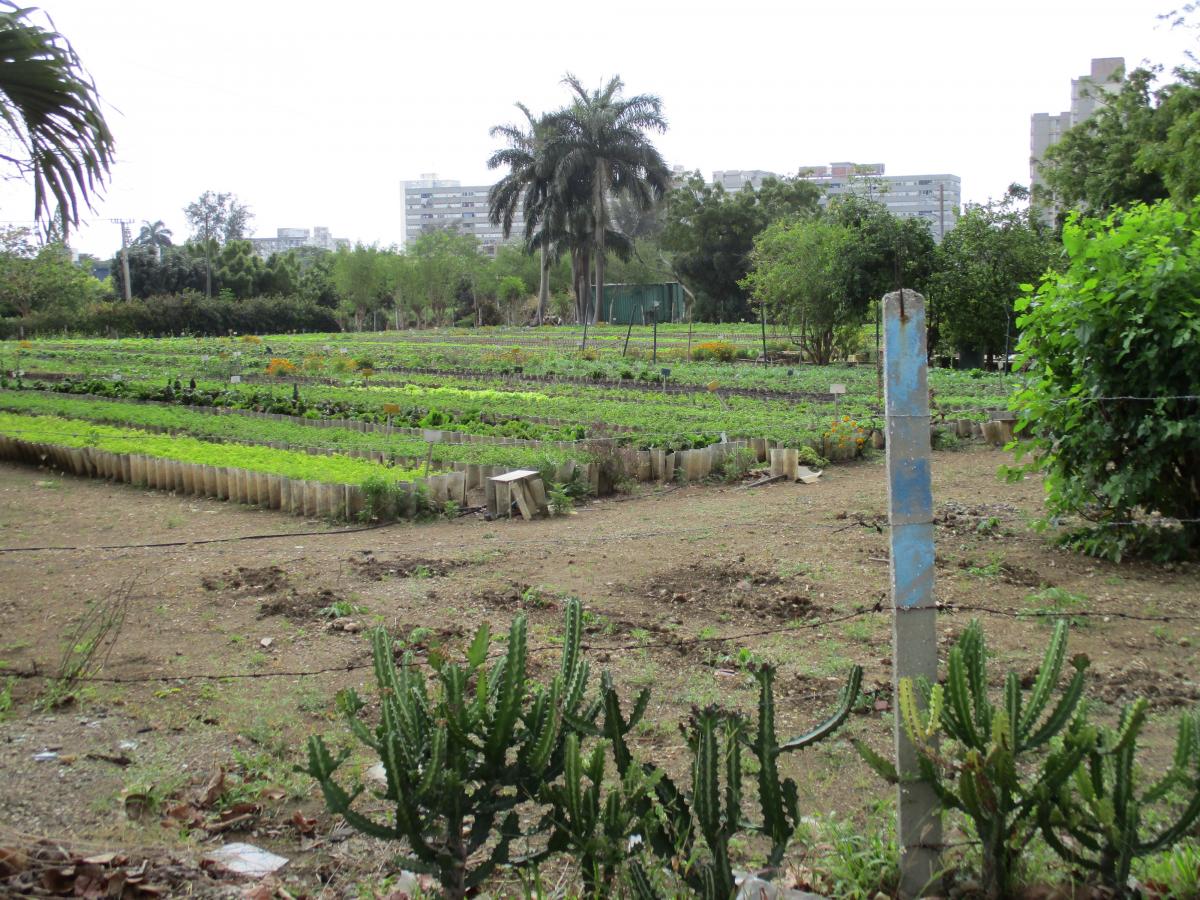
“After the Special Period, some models did not survive, like the bicycle,” Gina Rey told me. “Others have been maintained, such as the urban gardens that are now part of the national program of Urban Agriculture, which has continued its growth and development in a sustainable manner. In Havana, the results have been good, and this can continue improving at the community level, with an ever more participatory process in the city’s neighborhoods.”
She added that Havana’s informal family gardens have also “increased much, and are cultivating medicinal plants and condiments for the kitchen.”
To see these urban farms, I took a taxi out to Vedado, the greener, more spread-out and in pre-Revolutionary times upscale district to the west of Central Havana. The center of Vedado is the Plaza of the Revolution, Cuba’s heart of administrative power, where Che Guevara’s iconic face looks down from the wall of the Interior Ministry building.

Just a couple of blocks off this expansive and sterile square, housing projects stand alongside faded mansions of the long-departed bourgeoisie, now inhabited by working-class residents. On one of these streets, I visited with Isbel Díaz Torres, a sometime literature professor and one of Cuba’s handful of dissidents of the left. His network, the Cuban Critical Observatory, was founded after the power transfer in 2006, to bring an explicitly anti-capitalist voice to the agitation for greater freedom.
Díaz considers himself an anarchist, and lives much as you’d expect one to—in a squat, or as near as you get to one in Havana. As we passed through the columned entrance of the old house and crossed an interior courtyard, he told me the history.
“In the ’90s, this was the Cathedral of Heavy Metal,” he recalled with a smile. During the Special Period, the building served as a “casa de cultura”—a government-sanctioned community center—known as the Patio de Maria. But the youth rock scene there seems to have got a little out of control, and in 2003 the government had it closed—possibly due to the embarrassment of a hive of metal-heads just a block off the Plaza of the Revolution.
The building sat vacant for a while, but after the devastating hurricanes of 2008, local folk whose homes had been destroyed or damaged took shelter there—and were allowed to stay, their residency “unofficial” but tolerated. Díaz and his boyfriend are among them, sharing a small apartment behind the courtyard.

Díaz sees a process of state appropriation of alternative culture at work. He notes that while the rebellious Patio de Maria was shut, a new “official” club drawing metal acts, Maxim Rock, has opened on the other side of the Plaza.
“In the beginning, the metal scene was totally underground,” he said. “Then they created an agency for it. They have one for rock, they have one for hip-hop—it is totally controlled.”
Community agriculture, that other form of reclaimed urban space from the Special Period, survives—although here too, Díaz is cynical. Contrary to official claims, he said gardens are being abandoned around the city. “The perspective of growing your own food on plots proved temporary, now that we have oil and chemicals again.”
He noted that two how-to books on gardening and household self-sufficiency that were immensely popular during the Special Period—El Libro de La Familia (The Book of the Family) and Por Nuestras Propias Esfuerzas (By Our Own Efforts), both published by the army’s Olive Green Editions—are “almost forgotten today.”
It may be hard to say if the huertos familiares—informal family gardens, not regulated by the bureaucracy—are in decline. The formal urban farms—known as organopónicos—are clearly thriving.
Díaz took me for a walk just a few blocks from his squat, and we passed big lots planted with bright-green rows of spinach, lettuce, chives, celery, parsley, cauliflower. Workers with hoes tilled the ground behind fences intertwined with fruit-bearing vines and flowers or reinforced with rows of cactus.

One organopónico is named Quinto Congresso—for the Fifth Congress of the Cuban Communist Party that took place in 1997, the year the farm started. Another is named Plaza, for the municipality that covers Vedado.
The workers took a little time out to answer my questions. These farms began spontaneously, yet often under the direction of bureaucrats who worked in the nearby government office buildings—to feed their own employees during the Special Period. But soon they were formally recognized and organized as collectives. They are still closely linked to the bureaucracy—for instance, selling produce to the Council of State, the highest body of power in Cuba, with its headquarters nearby.
There are four members of the Organopónico Plaza collective, and their salary depends on yield. It is supplemented by sales of produce to local residents from the little stall set up at the entrance to the farm.
Jorge Albertini, the director of Organopónico Plaza, told me he quit his job as a police officer to oversee the farm when it was formalized. “I like this better,” he said, smiling. When I asked about the agricultural methods, he quickly responded, “One-hundred percent organic! Chemicals are prohibited.”
But I noted that a big power-pylon towered over the farm, emitting its ominous hum.
The organopónicos, all on state lands that were vacant at the time of the Special Period, are organized as Unidades Empresariales de Base—Community Business Units—overseen by Havana’s Empresa Agropecuaria Metro, or Metropolitan Agriculture Company. These are a form of the Basic Cooperative Production Units, or UBPCs, established by decree of the Council of Ministers in September 1993.
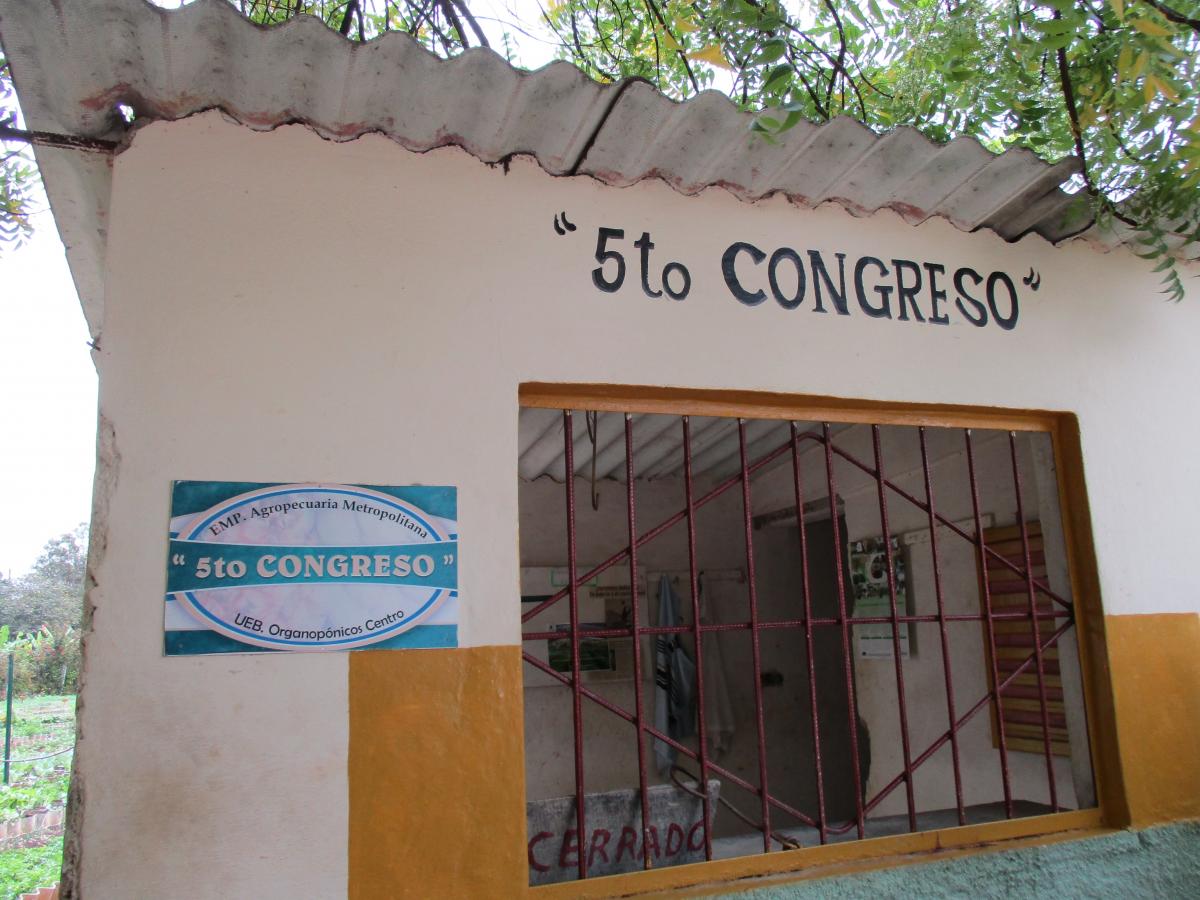
Decreed Law 142 ushered in what some consider Cuba’s “third agrarian reform”—after those decreed in 1959 and 1963, that effectively abolished the latifundio (big private plantation) on the island. Many of the big state farms in the countryside were broken up into UBPCs, and this model also incorporated the urban farms that sprang up in the cities. By the mid ‘90s, there were some 3,000 UBPCs across the country.
By 2007, there were a total of 35,902 hectares under cultivation by these urban farms in Havana—out of over 1 million hectares across Cuba’s cities and towns. Yields have steadily increased.
As a part of this same thrust of reform, the Mercados Agropecuarias Libres—Free Agricultural Markets, or MALs—were established in 1994. This allowed residents to buy local produce from private stands, outside the official system of distribution and rationing, known as Acopio (the Spanish word for “gathering”).
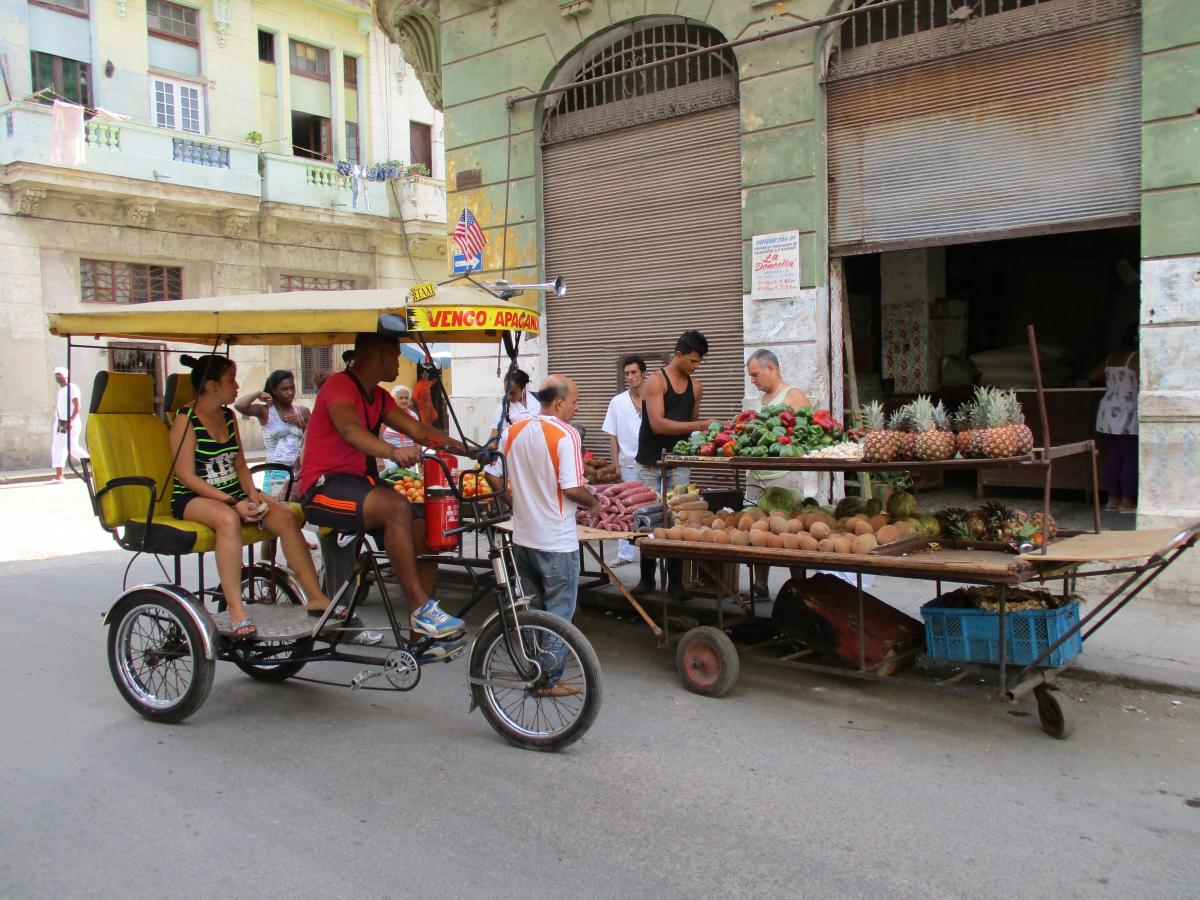
Also as a part of this same initiative, state institutions such as the Center for Genetic Engineering and Biotechnology (CIGB) in Camaguey began developing biofertilizers and biopesticides—for instance, controlled use of insectivores such as nematodes instead of toxic sprays. These were especially applied in the UBPCs.
In 2000, the Havana-based Alexander Humboldt Institute of Fundamental Research on Tropical Agriculture (INIFAT) issued the Technical Manual of Organopónicos and Intensive Gardens, to encourage the movement.
Sinan Koont, who wrote the most in-depth study of the organopónicos in English, Sustainable Urban Agriculture in Cuba (University of Florida, 2007), is clearly inspired by this movement. In terms very familiar to my own experience in Manhattan’s East Village neighborhood, she writes:
When vacant lots that have turned into garbage dumps are reconstituted as green spaces full of trees, flowers, vegetables, and ornamental plants, the result is not only aesthetic improvement — although urban beautification is certainly a desirable end in itself. In urban agriculture, however, these sites typically also become focal points in the community. Whereas formerly they avoided the unsightly unofficial garbage dump and site of criminal activity, people now come to the new neighborhood parcels or organopónicos to buy vegetables, fruits, and medicinal and spiritual plants, and to interact with their neighbors. The difference such a change makes in the sense of community well-being and cohesiveness is bound to be substantial.
Díaz was once again there to provide the cold water of his skepticism. This model has carved out a niche in the cities, but in the countryside the industrial model of agriculture has recovered along with the economy. He especially pointed to the growing areas of land coming under the control of CubaSoy, a military-owned company, using its own brands of GMO seeds to produce soy for animal feed.
“In the ’90s, there was a diversification of crops and a move to organic methods, because it became necessary,” Díaz said. “Today, experts are going to seminars around the world to talk about this, while Cuba is moving away from this model.”
However, there are some places in the countryside where the organic model has taken hold. And that’s where I was headed next.
Organic Sierra
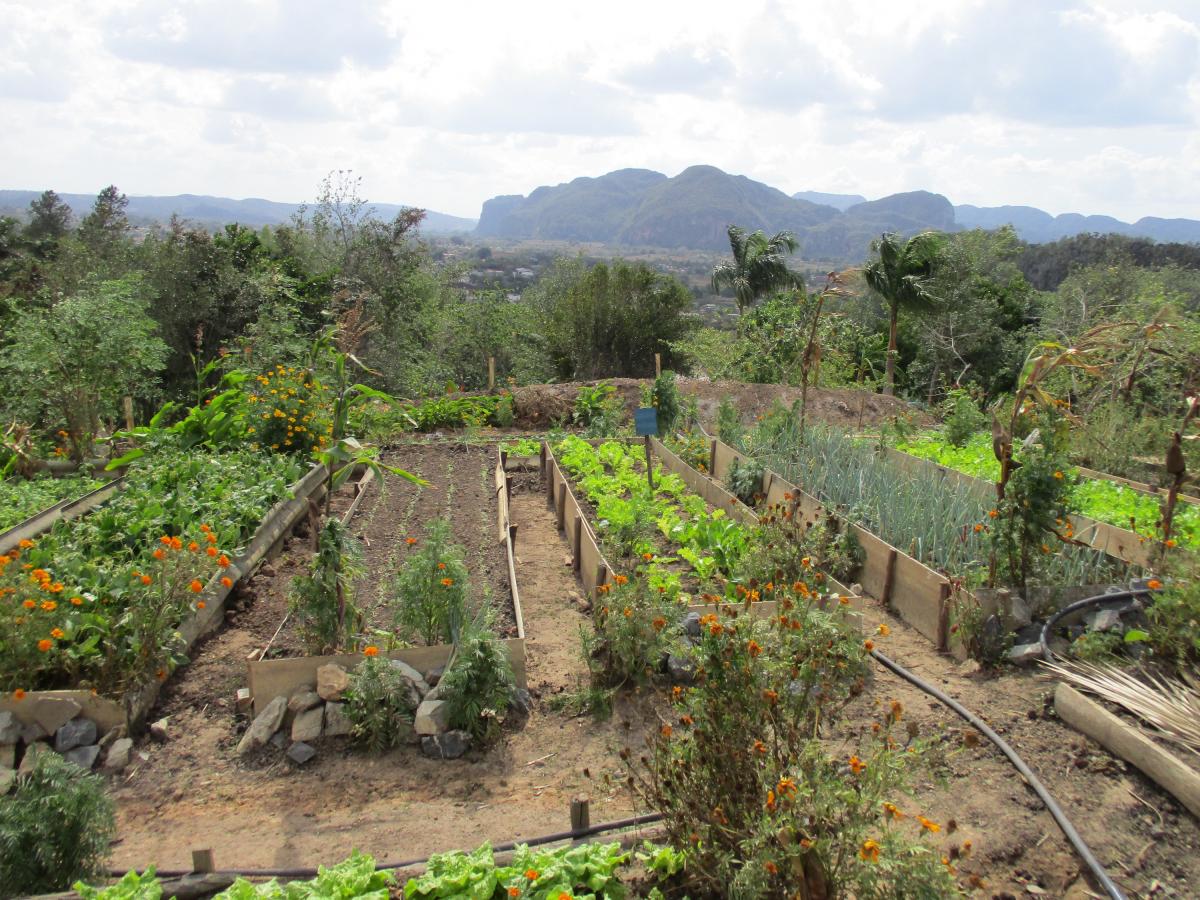
Despite moves toward liberalization, the state still formally owns nearly 80% of Cuba’s arable rural land, some 3 million hectares. Since 2009, about 1.5 million hectares of idle state lands have been leased to private farmers, on 10-year terms. Of what remains under direct state control, some 700,000 hectares is still dedicated to sugar production, in spite of the imperative to diversify since the Special Period. This is, however, less than half the figure before the Special Period. Like most Caribbean countries, Cuba must import more than two-thirds of its food—although now more than half the vegetables consumed on the island are grown in-country.
The sugar is mostly cultivated in the east. As it is an “extensive” crop, requiring large stretches of land, it is still mostly in the hands of big state collectives. To the west of Havana lies the tobacco country of Pinar del Río province—where this “intensive” crop has allowed for the survival of small-holders. This is one of a handful of Cuba’s 15 provinces where the campesino (peasant) sector predominates.
After my stay in Havana, I followed what is now an established tourist trail to Viñales, a small town nestled in the mountains of Pinar del Rio. The Sierra de los Órganos (a sub-range of the Cordillera de Guaniguanico, the spine of Pinar del Río) forms a spectacular backdrop to the town. Limestone monoliths known as mogotes rise dramatically, walls of bare rock creeping and crowned with lush vegetation. Sometime in the past, someone apparently thought the mogotes looked like pipe-organs, and this became a coincidental name. Viñales is one of the places where the organic agriculture encouraged during the Special Period is today well rooted.
Viñales National Park covers most of the Sierra de los Órganos, but this is ringed by small campesino holdings, with some inholdings within the park as well. These have been private family-owned lands since the area’s latifundios were broken up into parcels and titled to campesinos in the First Agrarian Reform of 1959.
One young campesino who gave me a ride in his horse-drawn buggy, asked how his family came to its land, answered proudly, “El Barbudo”—The Bearded One, Fidel Castro. Another I spoke to, working his field as I was hiking past, had a Che Guevara tattoo on his chest. This, clearly, was not a hipster accoutrement as it might be in Brooklyn or Oakland, but an expression of genuine loyalty.
Many of these campesino parcels still grow tobacco, but they increasingly produce fruits, vegetables and staples such as the root crop malanga for the local market.

Viñales, a UNESCO World Heritage Site since 1999, has now parlayed both its impressive scenery and the cachet of organic agriculture into an eco-tourism boom—a parallel economy overlaid on the traditional campesino sector. In the countryside, straw-hatted peasants driving oxen-drawn ploughs can be seen alongside foreign nature enthusiasts on mountain-bikes. Nearly every house in town has been turned into a casa particular—a family-run bed-and-breakfast, permitted by the government since 1997. As tourism goes, this is responsible tourism, with very little in the way of middle-men.
Pinar del Río was singled out for experiments in self-sufficient agriculture in the 1990s, and this has clearly served Viñales very well. One of the valley’s biggest tourist draws is Finca Agro-Ecológica El Paraíso—Paradise Agro-Ecological Farm. Every day, tourists arrive by the busload to sit at long tables on the big porch for a hearty multi-course lunch of dishes made from various greens, tubers and legumes—all organic, all grown on the Finca—followed by a tour of the vegetable beds and fruit trees. The Finca is situated on a hill to the east of the town, affording vistas of mogotes.
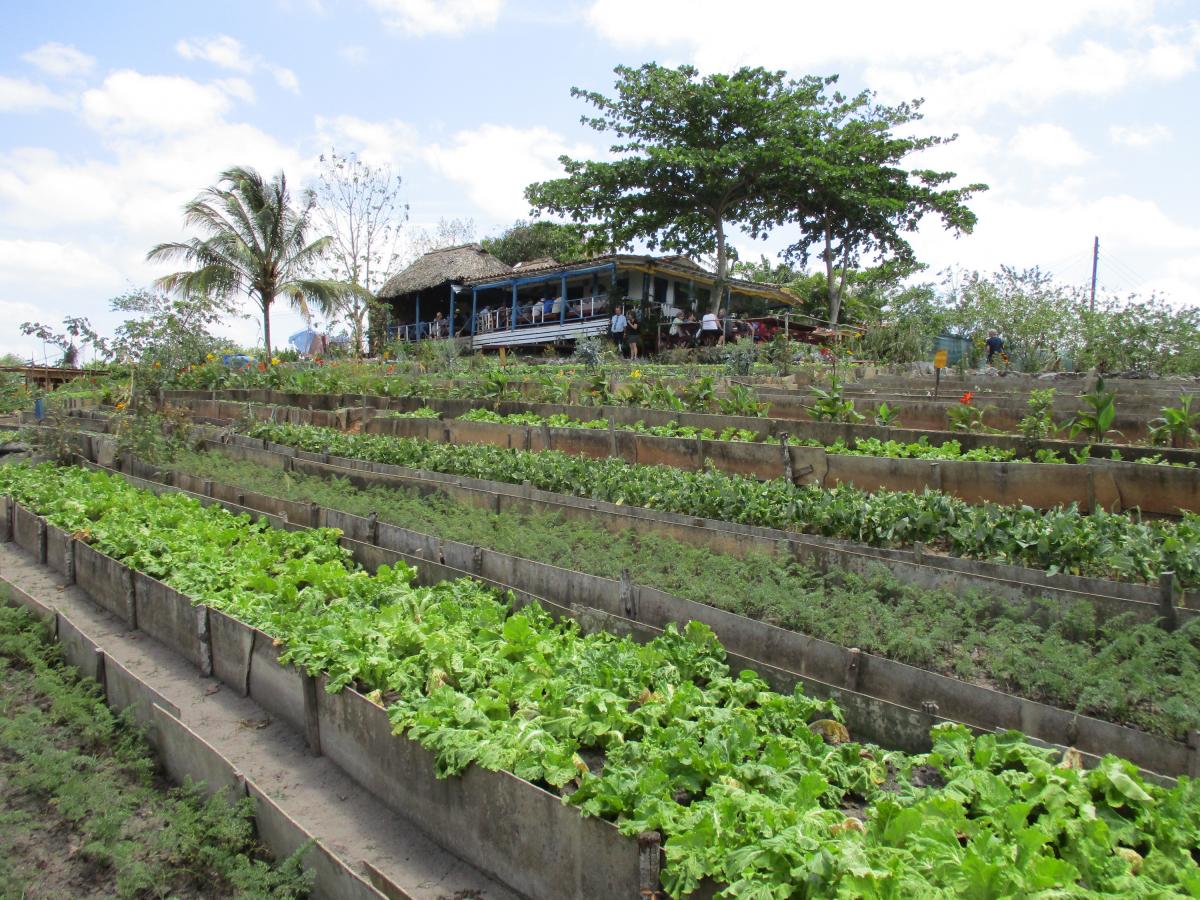
Wilfredo García Correa, the owner and founder of the Finca, told me some of the history as he led me around the grounds.
“Organic agriculture began here in the Special Period, and it has been expanding little by little since then,” he said. “The Special Period provided the impetus, but we came to realize the benefits. Every year more campesinos in Viñales go organic. The Russian advisors encouraged petro-chemicals in the old days, but now they have been almost completely abandoned in the Sierra de los Órganos.”
His own farm was encouraged by the government. He started with a small private parcel, but it was augmented by grants of unused adjacent state lands starting in 2003, until it grew to its current 8.9 hectares. He worked hard to reclaim the granted lands, which had been overgrown with marabú, an invasive weed.
García showed me the operations in lumbricultura—vermiculture, breaking down organic waste into humus with earthworms. Fat rabbits munched leaves in suspended cages, their droppings collected below to fertilize the beds that grow more greens for both rabbit and human consumption. Eventually the rabbits themselves are also eaten. “It’s a completely closed system,” García said.
Nearby, he reached into a honeycomb with his knife to scrape out a taste for me—produced by a local variety of bee, the melipona, that does not sting.
He indicated the pest-control methods perfected through years of experimentation. Different colored flowers are planted to attract insects, then coated with grease to trap them, or treated with tabacina—water infused with tobacco, fatal to the pests but harmless to the plants. Rotation and intercropping helps maintain soil fertility.
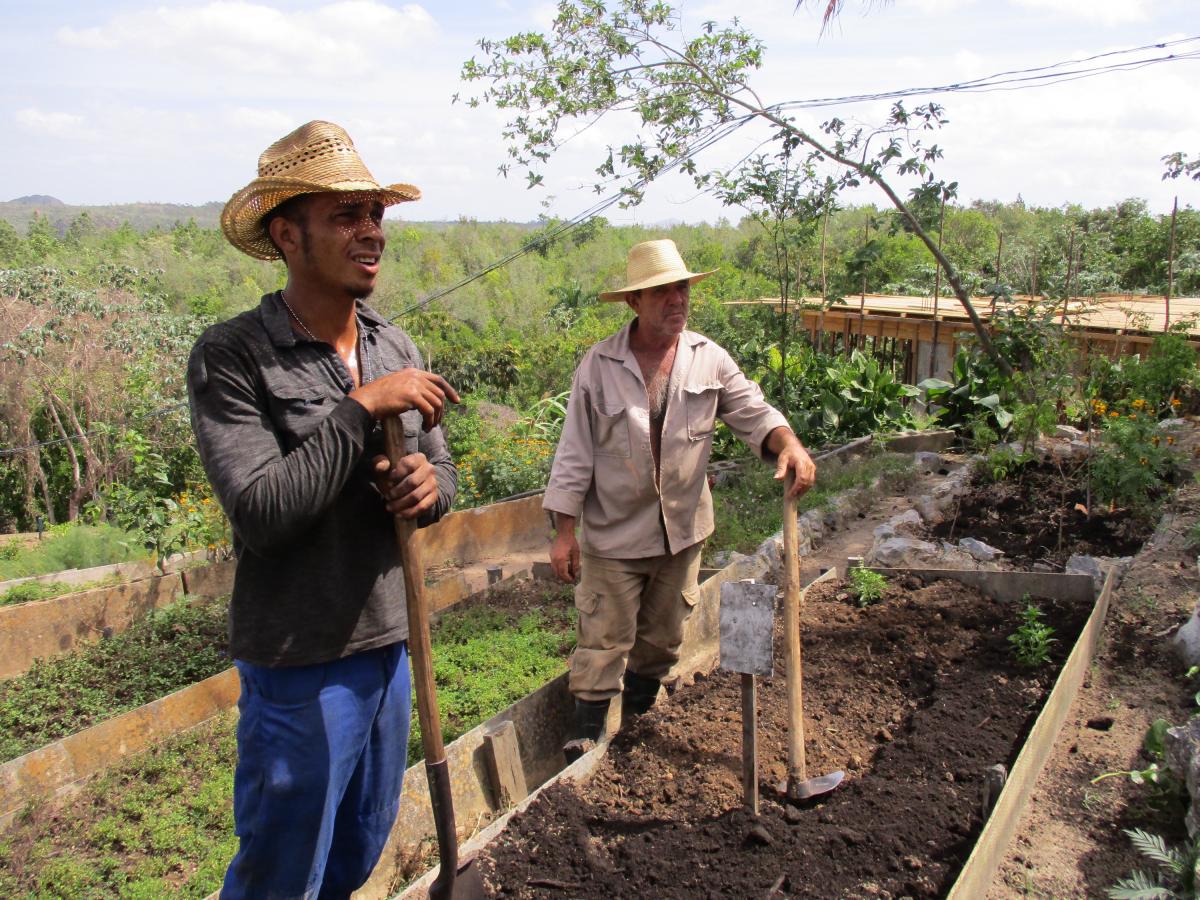
Worked by García’s family and a few hired hands, the Finca began receiving tourists in 2005. In addition to feeding the foreign luncheon crowd, the Finca’s produce is sold at a market in town and bought by the state for local schools and hospitals. The Finca is also now engaged in capacitación, teaching organic methods to local school kids.
On the wall of the Finca’s porch, García proudly pointed out the framed certificates of achievement he has received from the Agriculture Ministry and the National Association of Small Farmers (ANAP), the campesino organization formed after the Revolution. He is clear that the successful experiment in Viñales is ultimately a fruit of the agrarian reform.
“Land to those who work it,” he quoted the slogan of campesino movements across Latin America. “This is very important.”
But just outside the gate of the Finca, a big tourist bus sat idling—pointing to a long-term underlying contradiction.
Will the Mother of Invention Return?
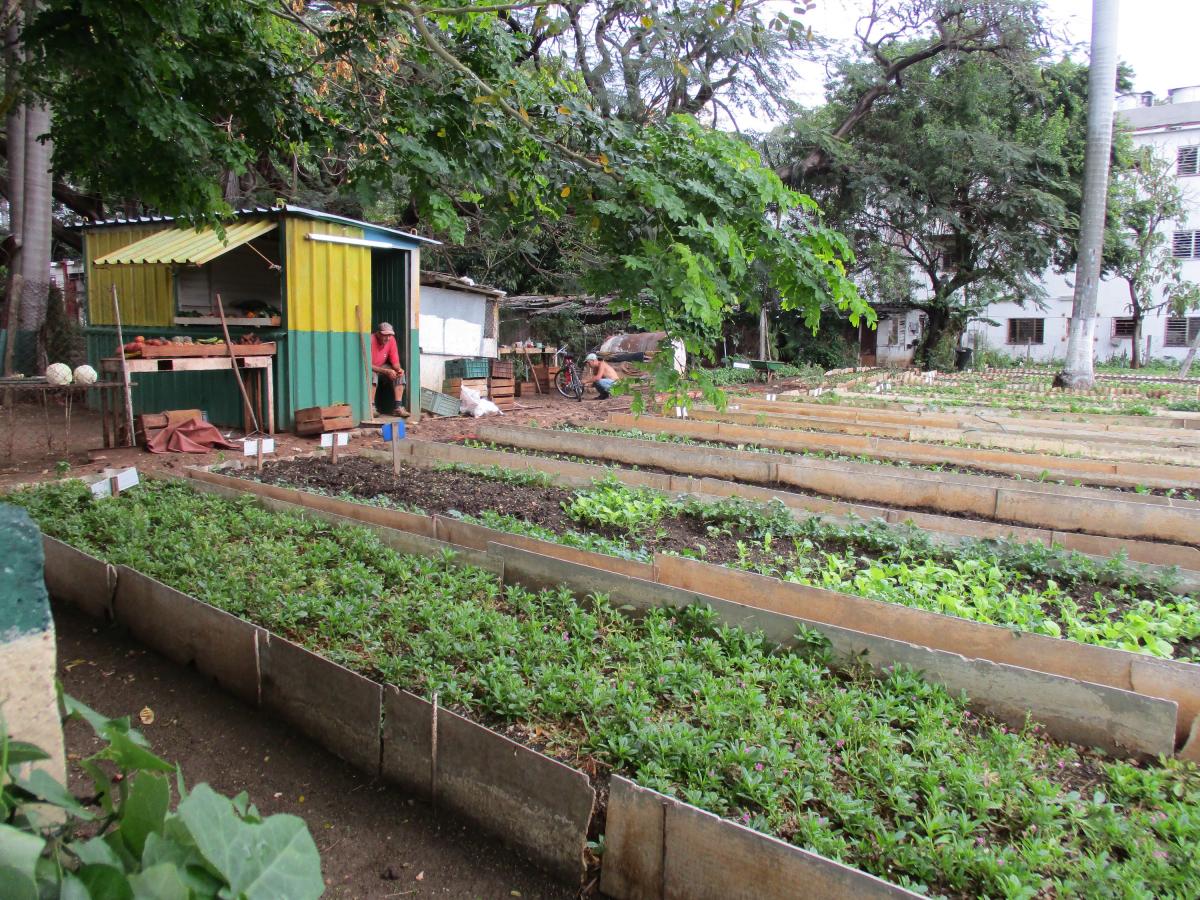
The model in Viñales seems utopian—low-impact tourism under the direct control of local residents. But all tourism ultimately means commodification of local culture, and is dependent on further integrating Cuba into globalization. The responsible tourism in Viñales, based on ecological alternatives, could presage less responsible models—ones that could open new class divisions, and ultimately threaten those very alternatives
Despite increasing liberalization, the campesino sector is still largely protected. While the big state farms are mostly dedicated to export crops, the campesino sector in large part feeds the country, and has been key in the move toward “food sovereignty.” Limits on the size of private agricultural holdings are still in place (the 67-hectare maximum established by the Second Agrarian Reform), and restrictions on sale of agricultural lands are being lifted but tentatively. Small-holders can sell to the state or each other, but mortgages, leases and liens are prohibited. Small-holders can also merge their lands in private cooperatives.
But the economic opening raises the question of how Cuba will react if there is a return to the kind of pressures seen in the ’90s. Back in New York, I looked up Samuel Farber, the Cuban-born author of Revolution and Reaction in Cuba, and several other books critical of the Castro regime, but from a leftist perspective. His thoughts were sobering.
“Current economic prospects do not presently look good for Cuba,” Farber told me. “In spite of a boom in tourism, low growth rates and low productivity continue to plague the Cuban economy. Low commodity prices in the world market have affected nickel, an important Cuban export. The delivery of oil to Cuba has been seriously impacted by the Venezuelan events, and there is of course great concern about the acts of aggression that Trump may sooner or later take against Cuba.”
Venezuela’s political crisis has clearly been felt. Deep cut-backs of Venezuelan oil shipments have periodically halted operations at Cuba’s Cienfuegos refinery this year, and in March prompted the government to bar sales of premium gasoline except to tourists and officials. The vintage American cars and Soviet-era Ladas driven by the common folk use regular fuel, but this was still an ominous sign.
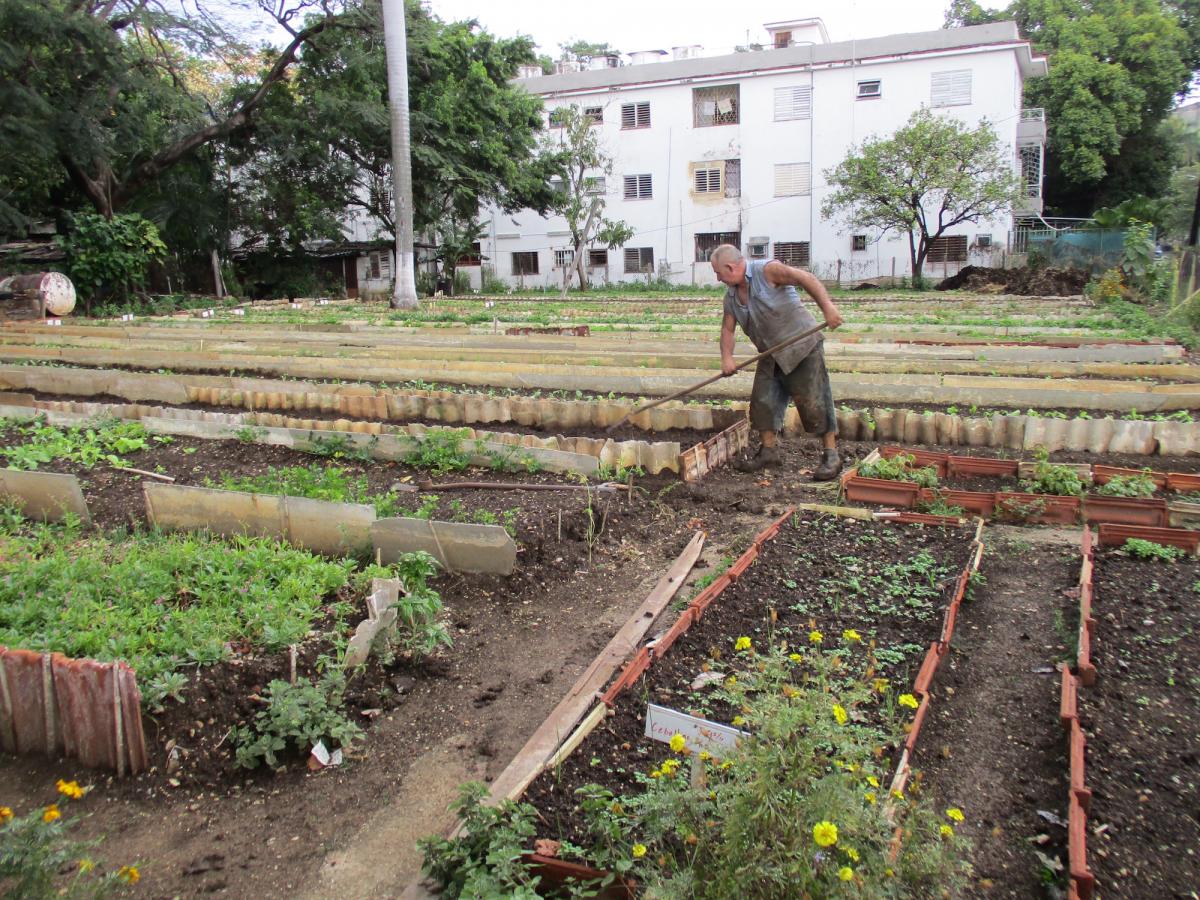
Last year, at the start of an eight-month halt in Venezuelan oil shipments, then-Economy Minister Marino Murillo even warned of possible blackouts—an implicit invocation of the Special Period, when rolling blackouts were standard in Havana.
“The supply of oil from Venezuela fluctuates but with a generally declining tendency,” according to Farber.
This May, the Cuban government announced that it will lower state spending in next year’s budget. A Council of Ministers statement declared in euphemistic tones: “The basic premise [of the 2018 plan] is to meet production and service goals through efficiency and a lowering of costs to levels less than in 2017.”
Farber also said that “the government’s inability to establish a single currency, as long promised, contributes to a climate of economic uncertainty.”
This is a reference to the Cuban Convertible Peso, or CUC, that is pegged to the dollar and exists alongside the ordinary Cuban peso. Although it is legal for Cubans to have CUC, it is primarily intended for tourists, and still helps segregate tourists from locals—although this segregation is much less pronounced than it was on my first trip in ’93, when the tourist economy used the US greenback.
Cuba has arguably undergone a sort of self-imposed “structural adjustment” over the past several years. In 2014, Cuba’s National Assembly passed a law offering steep tax cuts and other incentives to foreign investors. The Foreign Investment Law for the first time allowed offshore companies to operate in Cuba independently, rather than in partnership with state enterprises
In 2010, the government announced plans to lay off more than half a million workers from the public sector, in the expectation that they will move into private businesses. In 2012, a wage-freeze was announced until the country could eliminate subsidies and reduce public-sector employment. With a slightly perverse irony, the chosen conduit for these announcements was the official labor union, the Cuban Workers’ Confederation, CTC.
In my new conversations with Gina Rey, she noted that Cuba is closer to self-sufficiency in many ways than before the Special Period. “New models have emerged, such as the use of solar energy. There already exist several photovoltaic fields in the city, and this is expected to continue expanding, for purposes such as street lighting.”
This brought back memories of the frightening night bicycle rides on my 1993 trip to Havana, returning to my hotel after dark through streets of utter blackness—not even being able to see the pavement under my wheels.
Cuba is certainly better positioned to avoid this kind of disaster today, even in a worst-case scenario. But the question remains. To what extent was the ecological rhetoric of the Special Period making a virtue of necessity, and to what extent did it reflect a genuine commitment? Of course, the regime is not completely monolithic. Doubtlessly, some currents were developing an authentic ecological ethic, while others remained more rooted in the centralist ideas inherited from the days when Cuba emulated Soviet Russia.
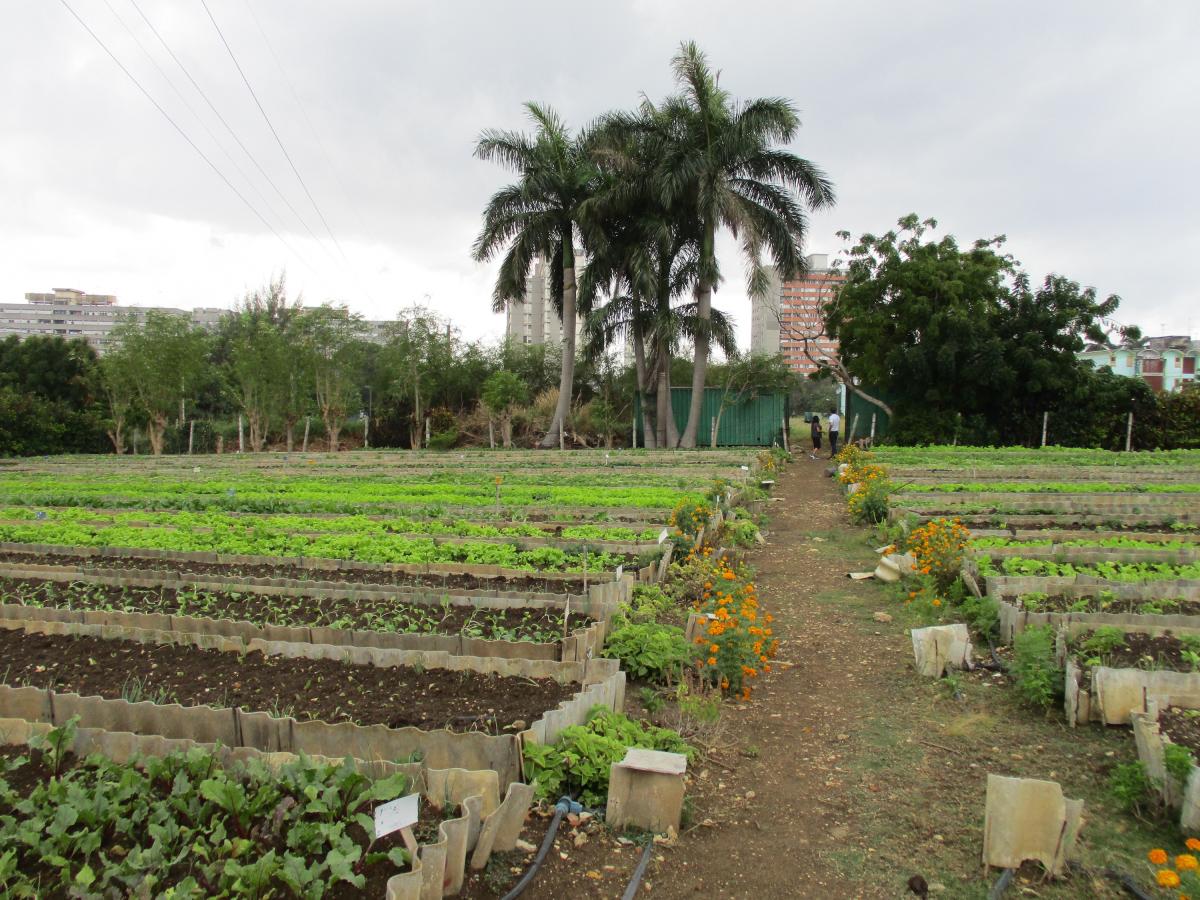
It’s to be hoped that Cuba will avoid the truest telling: a return of crisis conditions. In case of such contingency, will Cuba further open to foreign capital and join the global “race to bottom,” seeking investment at any cost? Or will it fall back on the ecological model to deepen self-sufficiency?
On the other hand, if the opening brings greater prosperity, a diversification of oil sources to ride out interruptions from Venezuela, and (optimistically) an end to the US embargo—this too will be a test. As necessity erodes, will ecological models wither along with it—as Havana’s bicycle lanes were abandoned after the Special Period?
Left-dissidents like Díaz and Farber agree with Cuban officialdom on at least one thing: opposition to the embargo. But the end of the embargo would also open new contradictions and challenges. Either way, Green Cuba will be further tested—with implications for the possibilities of a dignified human existence on Planet Earth after the era of plentiful oil and globalized capitalism.
———
A shorter version of this story appears in the Fall 2017 issue of Earth Island Journal. Versions also appeared in the Miami Herald, The Villager, Fifth Estate and (in Chinese translation) Shanghai’s 澎湃新闻 (Surging Times).
Photos by the author
Resources:
From our Daily Report:
Cuba Verde: survival of the ecological alternative
CounterVortex, June 24, 2017
Cuba: new law expands foreign investment
CounterVortex, April 1, 2014
Cuba: documents describe US ‘transition plans’
CounterVortex, Jan. 22, 2013
Cuba to impose austerity on workers?
CounterVortex, Sept. 14, 2010
See also:
REBOOT AMERICA!
Lessons from Post-Consumerist Cuba
by Michael I. Niman, ArtVoice, Buffalo, NY
CounterVortex, April 2009
—————————-
Reprinted by CounterVortex, Sept. 1, 2017




